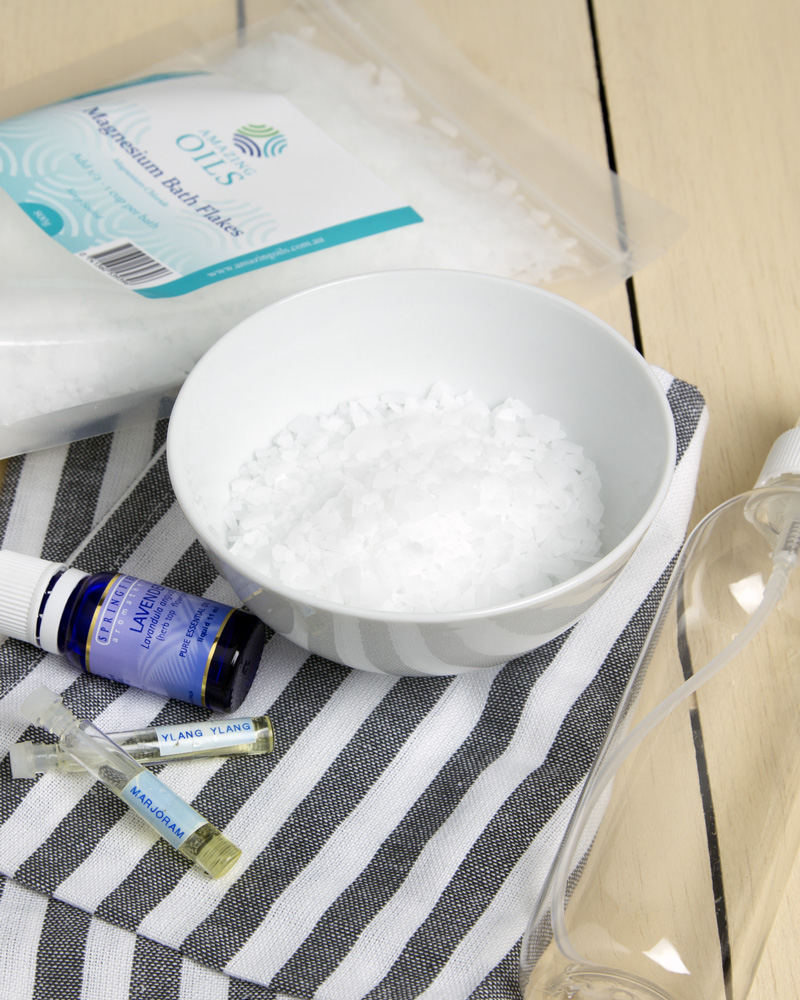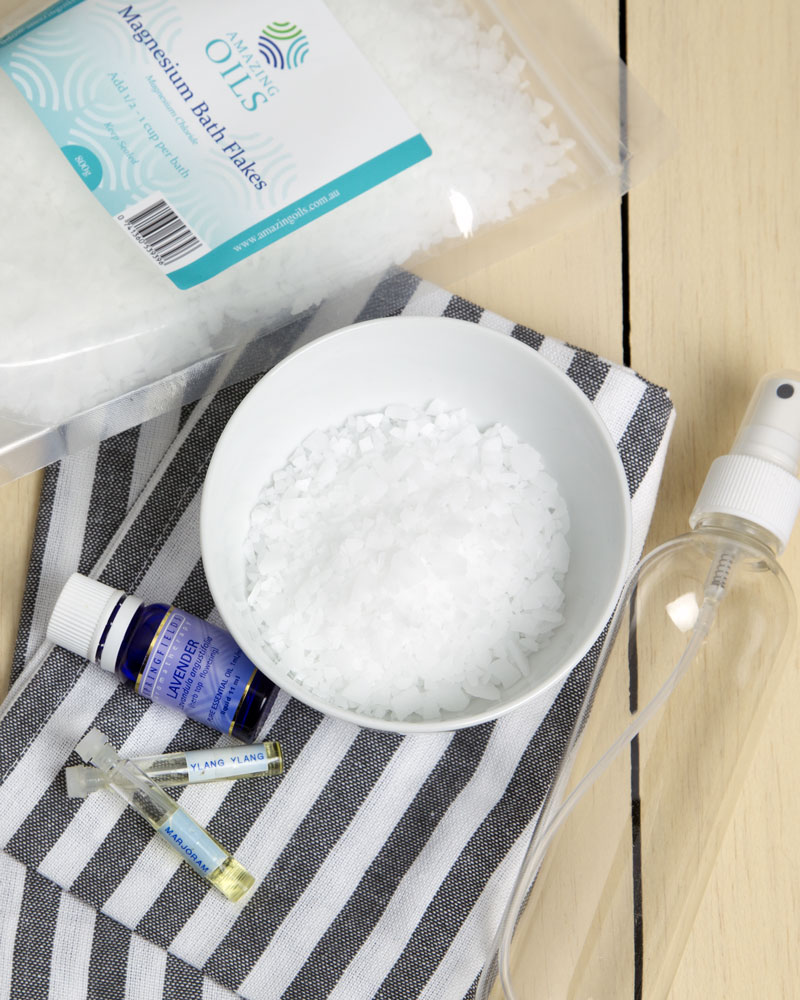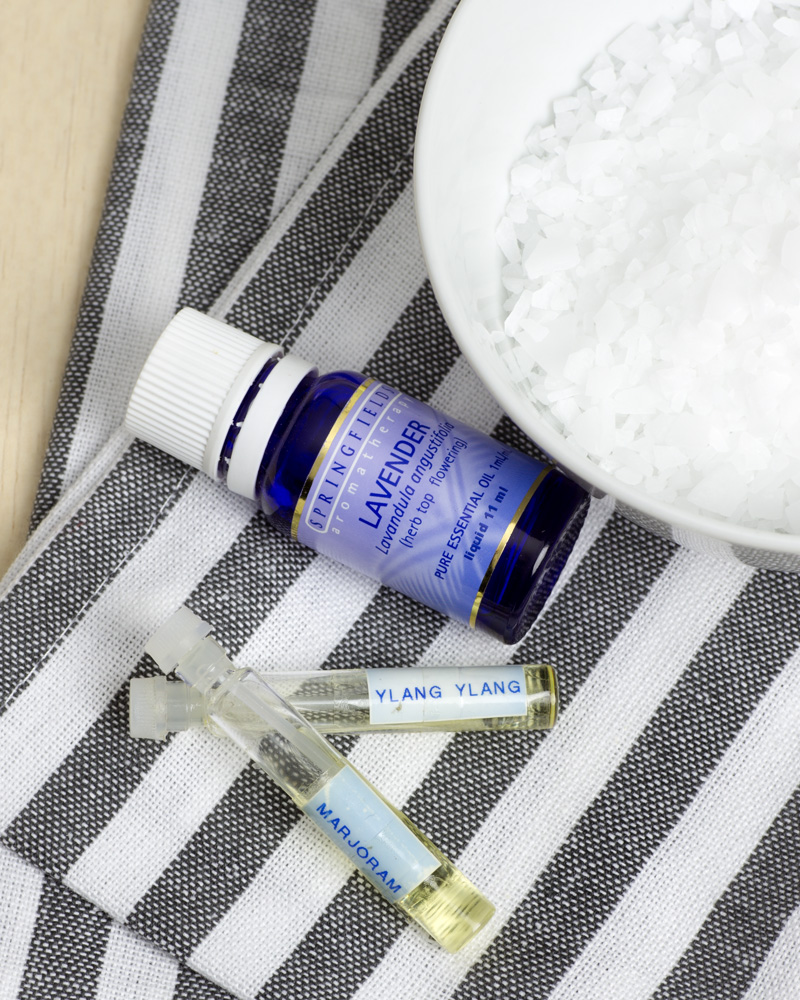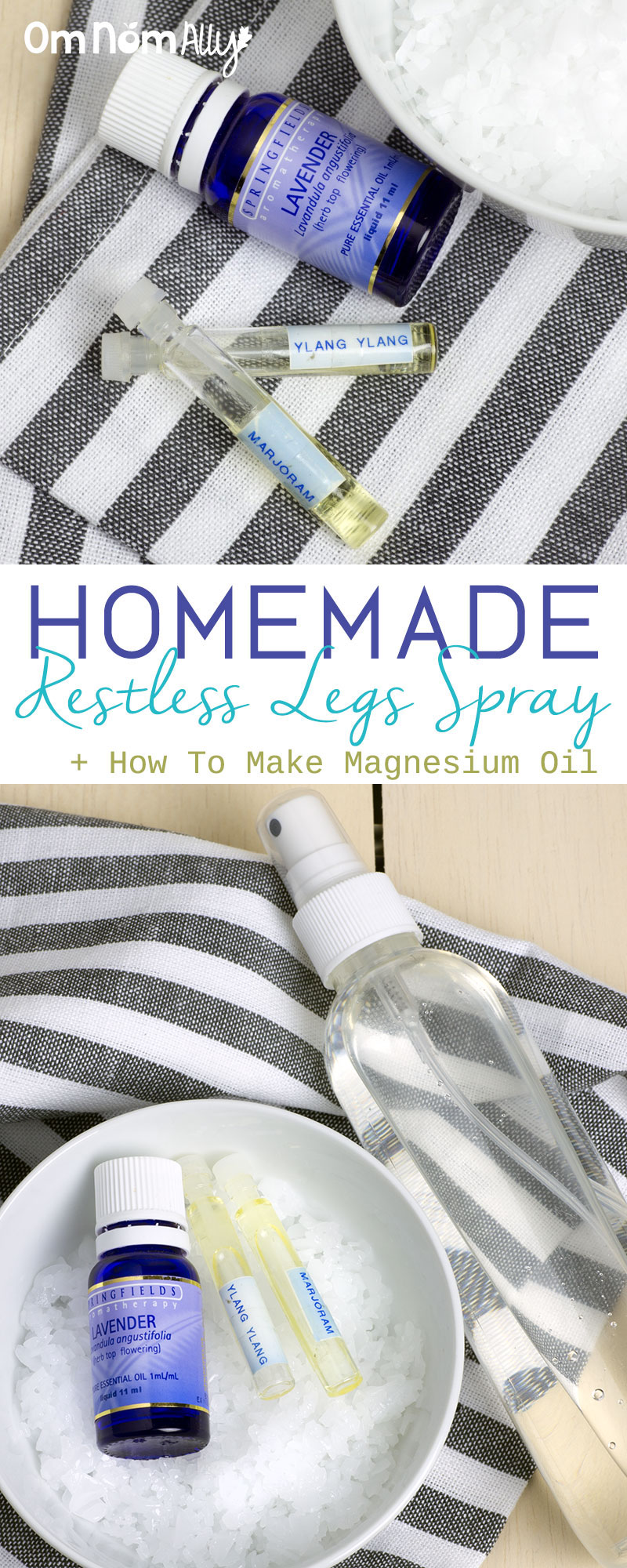
Get ready to make this homemade restless leg spray – AKA liquid gold for anyone plagued by this painful, uncomfortable and exhausting condition!
I experience the frustrating sensations, lack of sleep and obsessive leg fidgeting of restless leg syndrome from time-to-time (as a concomitant symptom to my autoimmune condition) and this spray has become a ‘must-have’ in my medicine cabinet. I’ve been talking about it at work to anyone who will listen and when Mum mentioned she was having RLS-like symptoms I made sure to send her home with a big bottle of this calming leg spray!
Whether you’ve got Restless Leg Syndrome or just some niggling leg or muscle pain, this homemade restless leg spray is the perfect combination of easy to make, inexpensive and fast acting – i.e. it’s amazing!
What is Restless Leg Syndrome?
Restless Leg Syndrome (RLS) a nervous system disorder characterised by leg pain, aches or crawling sensations in the legs, and is also a major cause of insomnia due to the compelling need to move the legs.
RLS affects 5-10% of the population and it is most common in people >45. This disorder may be of an intermittent or chronic nature, often increasing in severity. The sensations may also be of mind to severe nature, and occur in one or both legs, usually in the lower extremities.
While RLS symptoms may occur at any time of the day, it is most often exacerbated at night and results in sleeplessness due to the continual need to move the legs for comfort or uncontrollable jerking of the legs during sleep (Periodic Limb Movement Disorder (PLMD)).

Common RLS Symptoms
Sufferers of RLS may experience the following symptoms in one, or both legs:
- Cramping, aching soreness
- Electricity-like, shooting, nerve pains
- Creeping, crawling or squirming feeling inside the leg
- Irresistible urge to move or jerk the legs for comfort – including urge to pace, swing the legs or toss and turn in bed
- PLMD characterised by involuntary leg twitching during sleep
- Symptoms often more pronounced at night – a leading cause of insomnia and daytime fatigue
- Symptoms often worsened during periods of inactivity – causing frustration, anxiety and fidgeting
What Causes RLS
- Nutritional Deficiency – A deficiency of either magnesium, iron and folic acid have been linked, in some cases, to RLS development and severity.
- Family History – RLS may be caused by inheritance of specific genes, where an individual who’s parent suffers from RLS is three to five times more likely to experience RLS than the normal population.
- Underlying Medical Condition – Man chronic health conditions display symptoms of RLS including diabetes, peripheral neuropathy, Rheumatoid Arthritis and Parkinson’s Disease. It may be cause by some medications such as SSRI anti-depressants, as well as some antinausea drugs (prochlorperazine or metoclopramide) or antipsychotic drugs (haloperidol or phenothiazine derivatives). RLS may also suggest an underlying predisposition for cardiovascular disease and hypertension.
Natural Treatments for RLS
- Nutritional Supplementation – Magnesium is a a crucial mineral to over 300 enzymes and all the organ systems of the body. A dietary magnesium deficiency may affect nervous system function, predisposing individuals to nervous tension, insomnia and muscle cramping and spasm. Take 300mg Magnesium (in highly bioavailable citrate or glycinate form daily in powder or tablet form to relax the muscles and nervous system and aid the symptoms of RLS. Iron deficiency (including anemia) and folic acid metabolism/deficiency should also be thoroughly investigated and addressed.
- Increase Electrolyte Intake – Depletion of electrolyte minerals may induce cramping and pain, so make sure replenish your stores of sodium, calcium, magnesium and potassium daily with coconut water or mineral enriched water. For lots of information about coconut water in particular, check out of of my favourite books.
- Diet – Limit alcohol intake as well as consumption of pro-inflammatory alkaloid-containing foods and substances (such as caffeine, nicotine and nightshade vegatables).
- Physical Therapy – Regular light to moderate exercise may alleviate RLS symptoms including compulsive leg jerking or pacing – though excessive (or extremely exertive) exercise may contribute to insomnia or exacerbate symptoms including aching or cramping. Regular, light massage of calves and feet may aid in relaxation and release of nervous tension. Self massage before bed may reduce symptoms and aid sleep quality and quantity.
 Transdermal Magnesium Oil for RLS
Transdermal Magnesium Oil for RLS
Transdermal (or ‘topical’) magnesium is a an it’s easily absorbed form of this mineral (magnesium chloride) that quickly increases body stores and provides fast symptomatic relief. This is beneficial for RLS as it can be applied as close to the affected area as possible and bypasses (slower) gastrointestinal absorption. Studies have shown that the use of transdermal magnesium is extremely effective for increasing magnesium levels and has positive effects on muscle pain, soreness and fatigue associated with RLS. For more information I recommend reading ‘Transdermal Magnesium Therapy: A New Modality for the Maintenance of Health‘ by Mark Sircus.
Large doses of transdermal magnesium are well tolerated, so you can use your homemade restless leg spray as needed until symptoms improve. Make sure to apply to clean, dry skin only for maximum absorption. At minimum, I would recommend spraying the legs once in the morning, once in the afternoon and once more before bed. Keep the bottle next to the bed in case you need another application during the night.
The spray has a slightly oily sensation on the skin; be mindful that you may also experience a tingling, itching or mild stinging sensation on the first few applications if you have low magnesium levels. If the stinging is incredibly uncomfortable, does not lessen over time, or you have very sensitive skin, then you could also dilute your magnesium oil spray 50/50 with more spring or filtered water.
While there are many brands of magnesium oils and sprays available, I like to save myself some money and make my own spray from magnesium bath flakes and spring water. The resulting mixture is just as potent as the health food store product, but around 75% more economical based on volume. A couple of brands of flakes I would recommend include Amazing Oils and Ancient Minerals (try here for Australian readers). Scroll to the bottom of the post for recipe instructions to make your own magnesium oil.
Essential Oils for RLS
There are a number of beneficial essential oils for Restless Leg Syndrome, I use the following three most often in my homemade magnesium spray:
- Lavender – A potent relaxant essential oil, lavender promotes restful sleep and calm twitching, fidgety legs and feet.
- Marjoram – As an anti-spasmodic, analgesic and nervine sedative, this essential oil is useful for all kinds of muscle cramping and nervine pains such as those in RLS.
- Ylang Ylang – This essential oil may aid shooting nerve pains and RLS-related insomnia, due to it’s sedative and hypnotic effects.
In addition to this homemade restless leg spray, you can also use these oils topically (diluted in a carrier oil like sweet almond, coconut or olive oil) as a massage oil for the feet and legs, or in an atomiser/diffuser to permeate the whole room for inhalation. On the other hand, the spray can be made without the essential oils, but their inclusion adds an extra level of sense-based healing.
I purchase my essential oils from a number of reputable companies, including Springfields which is available here in Australia. You could also purchase from Amazon, iHerb or Mountain Rose Herbs.
Homemade Restless Leg Spray
- 250ml spring or filtered water
- 1 cup magnesium chloride flakes
Alternatively, use 250ml store-bought magnesium oil and proceed to second step of instructions - 10 drops lavender essential oil
- 5 drops marjoram essential oil
- 5 drops ylang ylang essential oil
- Pour water into a small saucepan, bring water up to a boil and then remove from heat. Stir in magnesium flakes and stir constantly until completely dissolved. Allow to magnesium oil mixture to cool to room temperature.
- Once cooled, add in essential oils, stirring well to combine,.Using a funnel, pour into one or more spray bottles and store in a cool, dark place.
- To use, spray liberally over affected limb and massage in gently to aid absorption. Can be used as needed for symptomatic relief, or before bed to aid relaxation and sleep.




Comments 4
Magnesium is a serious miracle worker that’s 100% under appreciated!
Author
It really is, though I’m starting to see more and more customers and clients that know about it 🙂 the word is spreading!
Good morming, do you have any proof this works and is magnesium powder the same as flakes, many thanks
Author
Off the top of my head, the most recent study I read about topical magnesium was in it’s use for patients with fibromyalgia. In regards to the magnesium powder, was there a particular brand were you referring to or have seen? It needs to be in the form of Magnesium Chloride for transdermal applications, so any brand should be suitable 🙂